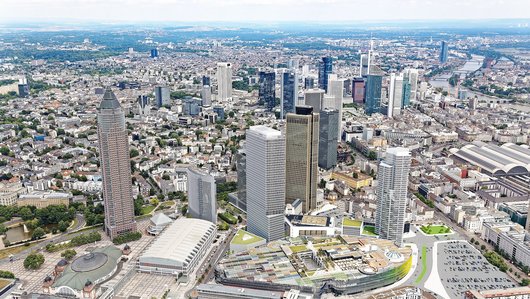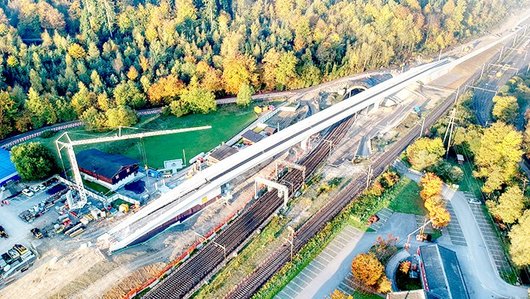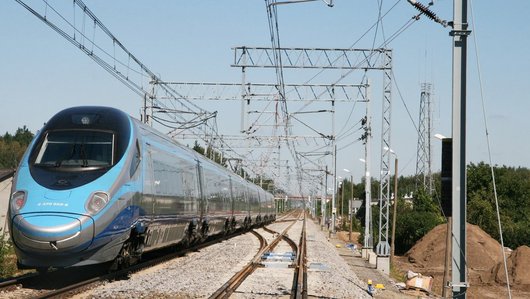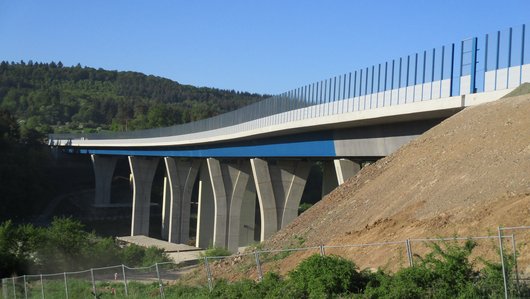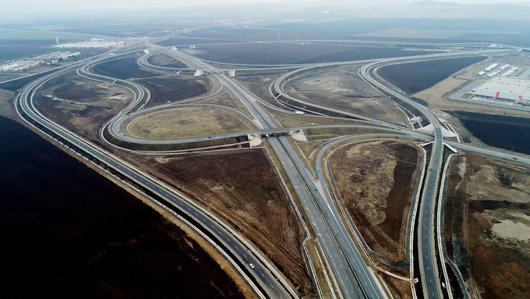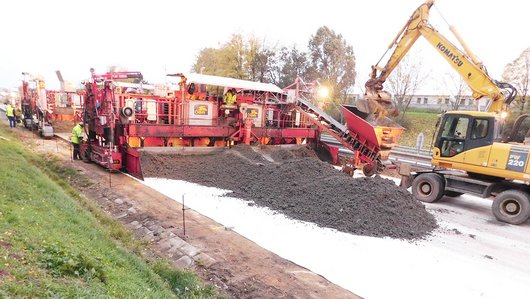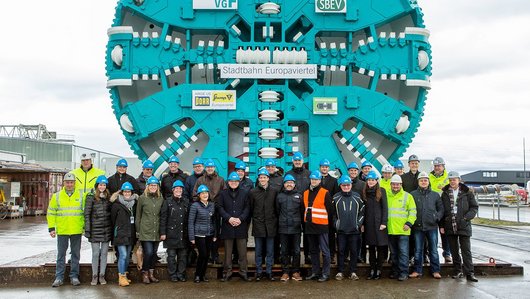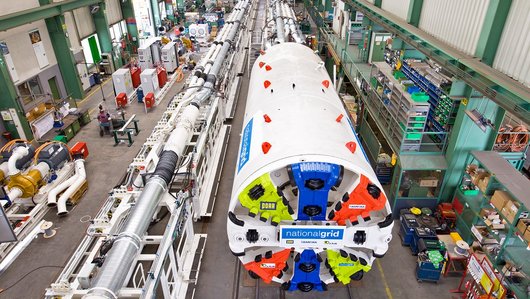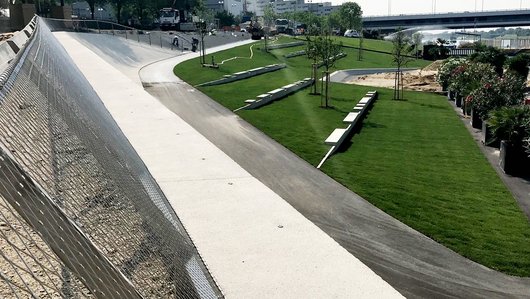
08L-26R Runway Henri Coanda Airport Bucharest
Within just five months, PORR Construct has modernised one of the country’s most important runways at Henri Coanda International Airport in Romania, Bucharest.
Runways form the heart of every airport. With the general modernisation and rehabilitation of the airport’s second runway - including a new visual aids system for navigation, runway strip landscaping and sewerage - PORR ensured that the Henri Coanda International Airport in Bucharest meets modern demands, especially the requirements of EASA, the European Union Aviation Safety Agency.
-
EmployerNational Company of Airports Bucharest
-
ContractorPORR Construct
-
Order typeGeneralunternehmer
-
Project typeInfrastructure – Airport construction
-
Project scopeModernisation of the 08L-26R Runway (runway structure, visual aids for navigation, runway strip landscaping and sewerage) - Design and Build
-
Order volumeEUR 26m
-
Construction start08/2020
-
Construction end01/2021
Background
Located in the north of Bucharest, in Otopeni, Henri Coanda International Airport is the country’s largest airport. Originally known as Bucharest Otopeni International Airport, the airport was named after the Romanian flight pioneer Henri Coanda, builder of Coanda-1910 aircraft and discoverer of the Coanda effect of fluidics, in May 2004.
Henri Coanda International Airport serves as headquarters for TAROM, the country's national airline. The 08L-26R Runway was built in 1986 when the airport was undergoing a new stage of development, according to the standards and norms applicable at that date. From 1996 to 1998, 2007 to 2011 and in 2016, only maintenance works were carried out.
In addition to technical complexity, compliance with stakeholder requirements such as airport safety and security, was a challenging part of this project. Converting the runway strip from “airside”(restricted access) to “landside”(unrestricted access) area, in order to facilitate the optimum flow of resources, represented a must for shortening the execution period of the project.
Meeting highest standards
The National Company of Airports Bucharest is coordinating development and modernisation projects on the city’s two airports, Henri Coanda International Airport and Aurel Vlaicu Airport, in order to ensure compliance with national and international standards and practices in the field of airport infrastructure. PORR Romania was entrusted with the design and execution of the rehabilitation works for the existing structure of the runway including the connection areas to taxi ways, the new construction of the rain water drainage system and the modernisation of the existing visual aids system for navigation. The client’s target for Runway 08L-26R was to ensure operation capability in low visibility conditions with 4 E aircrafts, such as B747-400, B777 or A330. From August 2020, all flights were redirected to the second runway of Henri Coanda International Airport for a period of almost five months in order to ensure the continuity of PORR’s modernisation works for Runway 08L-26R.
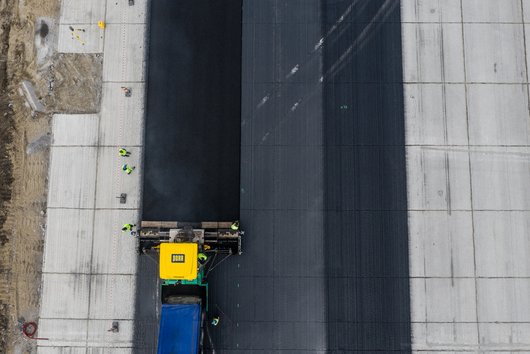

Modern runway pavement using Trimble
The runway pavement has been computed in accordance with the client’s requirements and the applicable norms and standards. The 45 m-wide runway comes with a cross profile of 1.3 %, 7.5 m shoulders and a 2.5 % slope. The additional asphalt reinforcement layers (>15 cm) ensured a Pavement Classification Number, PCN for short, of 92 R/D/W/T.
The rehabilitation works of the runway consisted of the milling of the existing asphalt (28,600 m2) and concrete layers (46,900 m2) on a variable depth, replacing damaged concrete slabs (6,500 m3), recalibration and filling of joints (115,000 m) along with the laying of asphalt mixtures (117,000 t) and markings (16,000 m2) in order to resume the runway functionality.
For the first time at an airport in Romania, PORR used an automated screed control system for asphalt paving, improving both accuracy and productivity. Thus, the paving process used non-contact electronic guidance systems to guide the paver along the grade without the aid of string lines. Stringless paving allows for elimination of hubs, pins, sensors or wands, clamps, and string lines (wires, cables, etc.).
The BIM team implemented this digitisation tool using the Trimble PCS900 Paving Control System and input data (3D models) generated in-house. The paving team was excited to switch from traditional survey and paving methods to 3D models and electronic guidance.
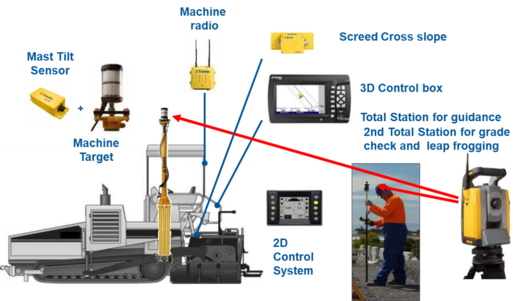

In-house asphalt supply
Most of the asphalt was supplied by PORR’s in-house asphalt plant situated in the north of Bucharest. The delivery of such large quantities of asphalt in such a short period of time, marked a huge success for the plant.
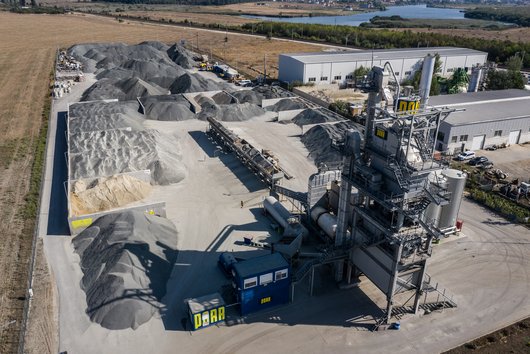

Landscaping works and visual aids system
In the course of the landscaping (systematisation) works on the runway strip and RESA area, a ballast bedding was applied at 27.5 m from the edge of the paved area (78,000 m3). Stabilisation was provided using hydraulic binders (120,000 m2). In addition, the team erected windproof platforms in both operating directions as protection zones against ground erosion caused by the blowing of engines (3,600 m2) and took care of the construction of the connection elements.
The visual aids system for navigation was designed and executed to comply with all regulations for a category III Precision Approach Runway in both directions. The team replaced all the primary and secondary circuits mounted in protection pipes, the aeronautical beacons for the runway threshold, end, centre and touchdown area, the approach system, the stop bar along with all signs and markings. In addition, the tower remote control has been upgraded.
Also, the drainage and sewage system was rehabilitated by replacing the old drain holes with a new system of F900 gutters (650 m). The project team constructed a new drainage channel system (8,100 m), restored the hydraulic installations and carried out rehabilitation works on the drainage pumping station.
Conclusion
The tight schedule and the resulting need for overlapping activities put the team to the test. The modernisation works of the runway were planned to be completed in eight months, but PORR successfully finished an extended scope of works in only five months. The runway could be reopened to air traffic on 19 February 2021.
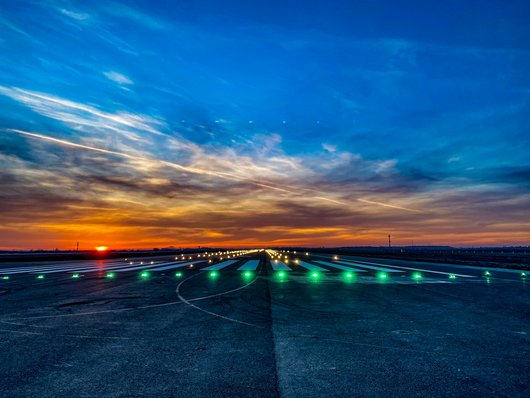

Technical data
-
Built area25 ha
-
Asphalt117,000 t
-
Concrete6,500 m3
-
Ballast78,000 m3
-
Drainage channels8,100 m
-
Primary and secondary power cables180,000 m
-
Aeronautical beacons1753 pieces
-
Precision Approach Path Indicator8 pieces

